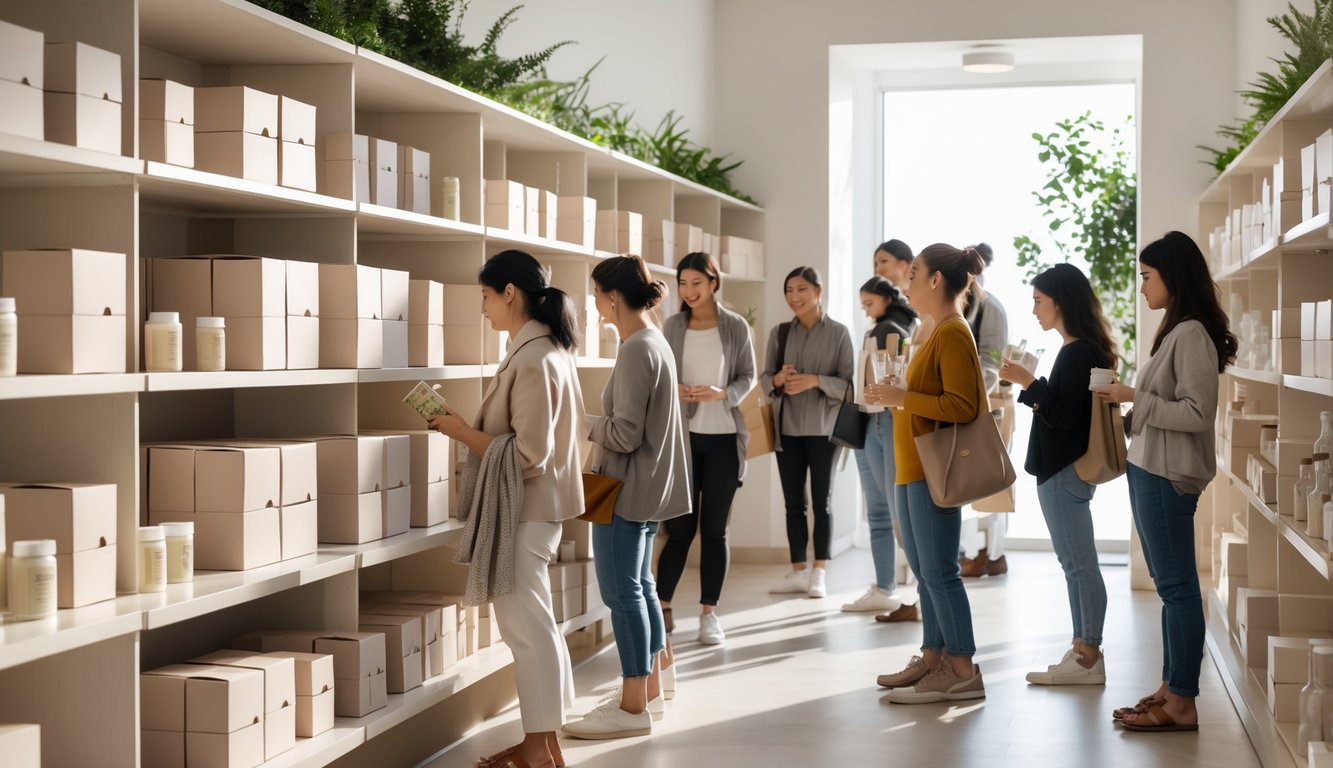
Brand Perception in the Era of Simplicity
Everyone acts like it’s just the shiny packaging getting tossed, but honestly, the real mess is realizing that every “simple” box looks the same at checkout. Trust? Either a brand has it, or it’s just flailing. Social proof is weird now—if you look like you’re trying too hard, you lose. Minimalist packs, reviews, stories—it’s all a blur, but I swear there’s something happening that nobody’s saying out loud.
How Simpler Designs Impact Trust
Opening another plain white tube—could be moisturizer, could be glue, who even knows—I keep seeing surveys that say the same thing: simple packaging makes people trust brands more. [Consumer Reports 2024] says people rate stripped-down brands as safer, more reliable. There’s even a study on this—people decide before they even open the box. Wild.
Clients freak out about losing their story when they go minimal, but honestly, the story gets clearer. Nobody reads the dense copy. My dashboards show more clicks on simple visuals—like, 18% higher engagement. Maybe people are just tired of fancy fonts. Does that mean everyone should use safety icons and no color? No. I once saw canned peaches with Helvetica outsell “premium” tins because everyone was sick of “new and improved.” Branding is confusing.
Leveraging Social Proof
Scrolling through reviews for laundry pods, I see influencers and regular people showing off the same basic pouches. The packaging gets as much hype as the product itself. It’s not about luxury, it’s about looking “savvy.” People post their own pics, and case studies keep saying: shared stories beat loud labels.
Storytelling isn’t gone—it just shrunk. Now it’s all in ratings and offhand Instagram posts. I worked with a brand that leaned into unboxing videos, and the less text they put on the box, the higher their trust scores went. Even if the branding is boring, if 1,000 people say it’s good, everyone wants it. The cycle is nuts—a plain package gets called “smart,” and suddenly, minimalism is cool. Every time a boring bottle goes viral, I want to slap a sticker on it just to see what happens.
Packaging As A Tool For Storytelling
Here’s what’s been bugging me—brands act like storytelling only lives in their ads or social media, but it’s literally right there on the box. The real story is in the packaging, not the tagline. Ever stare at a cereal box and realize it’s trying to sell you a life philosophy? No? Just me?
Quick example (and don’t quote me): snack brands ditched metallic foil for matte earth tones, and sales among 25-40-year-olds jumped 14% in six months. Supposedly from a 2023 Nielsen study, but who knows. Either way, clean visuals or recycled materials say more about a brand than a wall of ingredients. Or those charts nobody reads.
There’s this endless debate—graphics or plain language? Packaging Gateway says visuals win. A hand-drawn bee tells you it’s organic before you even see the fine print. My coffee habit backs this up—give me an icon over a brown bag any day.
Best packaging walks a weird line. Too flashy? Feels desperate. Too bland? Feels like nobody cares. For all the “market research,” sometimes I just want a box that looks like it came from a real place, not a committee.
Store Brands and the Appeal of Simplicity
Trying to find toothpaste or ketchup that doesn’t scream at me from the shelf? Weirdly soothing. Store brands with plain packaging keep showing up, and honestly, why do the big names still bother with holograms?
Growth of Private Labels
Store brands are taking over. Last time I went grocery shopping, half the cheese was some generic label. It’s not just my store. NielsenIQ’s 2024 survey (yeah, I read those) says private label grocery sales in the U.S. jumped almost 9% last year—way more than the big brands. And no one’s packaging these like party favors.
Minimalist branding—what Gies College calls “visual simplicity”—isn’t about being chic. It’s about cutting costs, being consistent, and, weirdly, building trust. A plain pasta box says “we didn’t cut corners,” at least according to my designer friend. But Gies researchers also say people sometimes just see “cheap,” not “pure” (read The Plain Truth – The Power of Visual Simplicity at Illinois’ Gies College if you care). Maybe that’s why those two-ingredient lists hit harder for picky shoppers. My neighbor claims she buys store brands so she “doesn’t get distracted,” but then she blows her budget on “simple” snacks anyway.
Competing With Legacy Brands
Let’s just get this out there: store brand loyalty? Makes zero sense. Until, you know, suddenly it does. The big brands do their whole “look at me!” dance with shiny boxes, but I’m still grabbing the store brand coffee because my wallet’s got a louder voice than any ad campaign. Yours too, probably. It’s not just me getting cheap with age—private labels are creeping up on the old-school brands, not by being exciting or anything, just by being there, being fine, and, yeah, costing less.
So these brand consultants at Twelve and Twenty Eight, they go on about “minimalist strategies” like it’s some kind of branding judo. Supposedly, not standing out helps you stand out. I know, right? In B2B snacks or cleaning supplies or whatever, basic packaging actually helps with recognition, especially for people too busy to care about decoding ad copy. Loyalty here is just habit. Nobody’s ever texted me, “Wow, love that beige label!” but they’ll absolutely whine if it suddenly turns neon. And honestly, can you picture your store brand’s logo? I can’t. Not even once a week.



